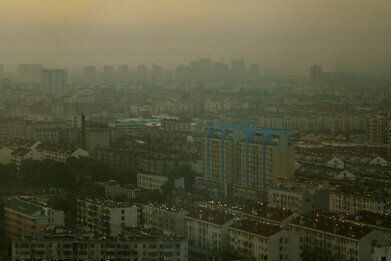Air Clean Up
What Is China's Air Pollution Plan?
Jul 16 2018
China has announced new details as part of its three-year plan to cut pollution, with an emphasis on boosting natural gas, phasing out coal and curbing steel construction. The plan focuses largely on the most pollution-struck areas of the country, including megacities like Beijing and Tianjin.
The announcements are just the latest in a long list of measures implemented by the Chinese government to try and shake their reputation as one of the most polluted countries in the world.
Turning the tide
For the best part of the last few decades, China has enjoyed a monumental explosion in its population, accompanied by a similar boom in industry and economy. Necessarily, this has entailed the construction of a significant number of power plants and industrial factories, many of which are older, more polluting coal factories.
However, the last five years has seen the country enter a new era in air quality monitoring. In 2012, the first national standards for particulate matter 2.5 (PM2.5) pollution were announced, while the following year, the country introduced its 12th Five-Year Plan to tackle air pollution. A key component of that plan was to build up a comprehensive air quality monitoring system.
Once the scale of the problem had been quantified, the Chinese government then set about trying to address it. This month’s announcement consolidates those efforts by laying out concrete targets.
Aiming high
The three-year plan is comprised a list of ambitious goals, including the following:
- Reduce coal consumption by 10% from 2015 levels by 2020
- Bring the percentage of energy generated by coal to below 58% by 2020 (it’s currently at around 69%)
- Increase natural gas consumption to account for 10% of overall energy use by 2020
- Increase sales of electric vehicles (EVs) to two million by 2020
- Increase production of shale to 40 billion cubic metres (bcm) by 2020
It appears that phasing out coal is crucial to achieving China’s air quality targets. Coal is the most polluting of all fossil fuels and although China has relied heavily on the substance for its ballooning energy needs, it’s now attempting to move away from this damaging fuel source.
Fundamentally, this will consist of a transition towards natural gas and shale consumption, much like the one occurring in Britain at the moment. In order to accommodate these new avenues of energy generation, the country also hopes to accelerate the construction of new gas storage facilities, with all interested parties (suppliers, industrial companies and government bodies) expected to meet legal obligations before the end of 2020.
Steel in the crosshairs
As well as targeting coal, the government are also cracking down on the polluting industries of steel, aluminium and cement manufacturing. In the most at-risk regions, including the strongholds of Beijing and Tianjin, as well as major steel-producing cities like Shijiazhuang and Tangshan, the construction of new facilities will be outlawed. The Yangtze delta area will also see its steel production curbed.
While it remains to be seen whether China can meet these lofty ambitions, the country is certainly making all the right sounds with regards to their environmental policy. Keep it up, and they’re sure to shed their unwanted title as one of the most polluted countries before too long.
Events
Apr 22 2024 Hannover, Germany
Apr 23 2024 Kuala Lumpur, Malaysia
Apr 24 2024 Sao Paulo, Brasil
May 05 2024 Seville, Spain
May 13 2024 Munich, Germany














